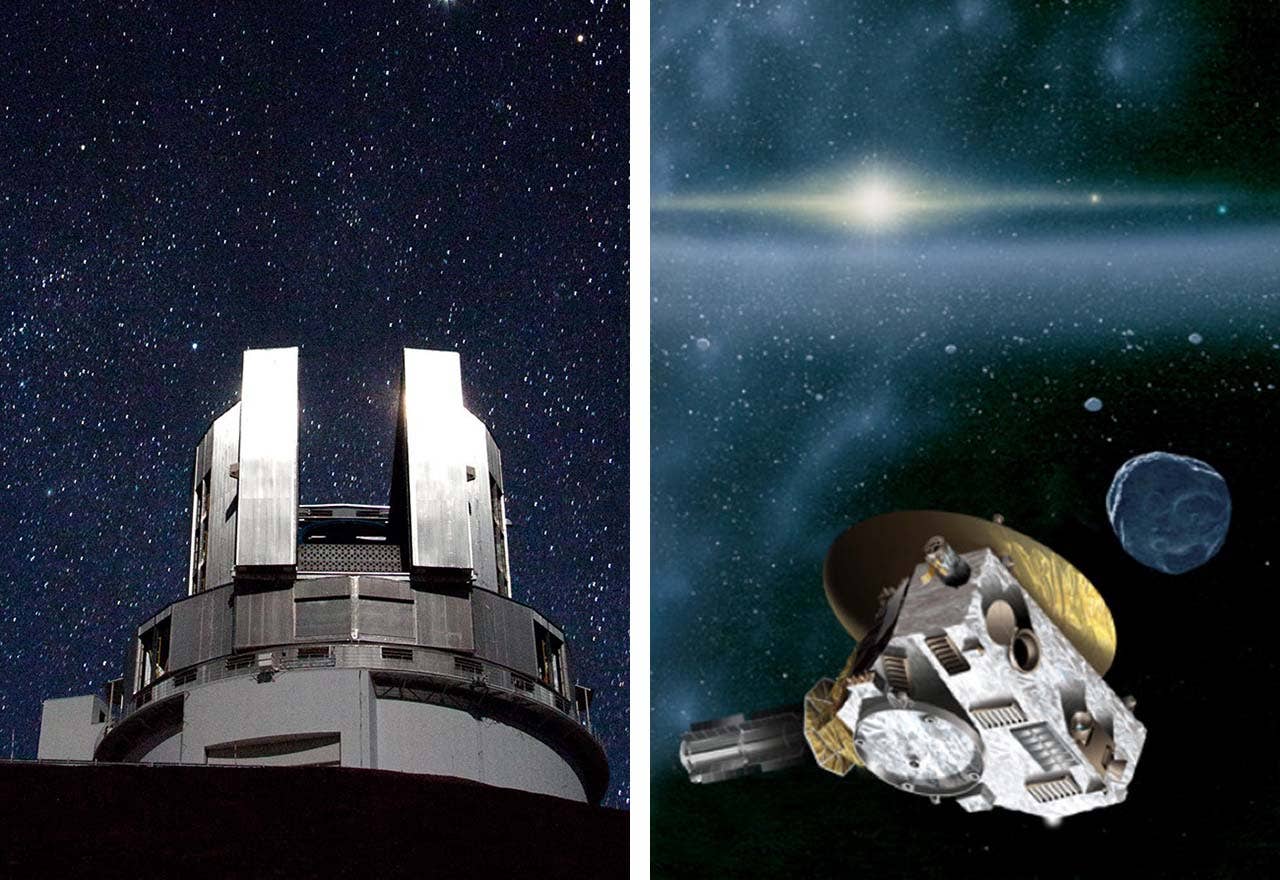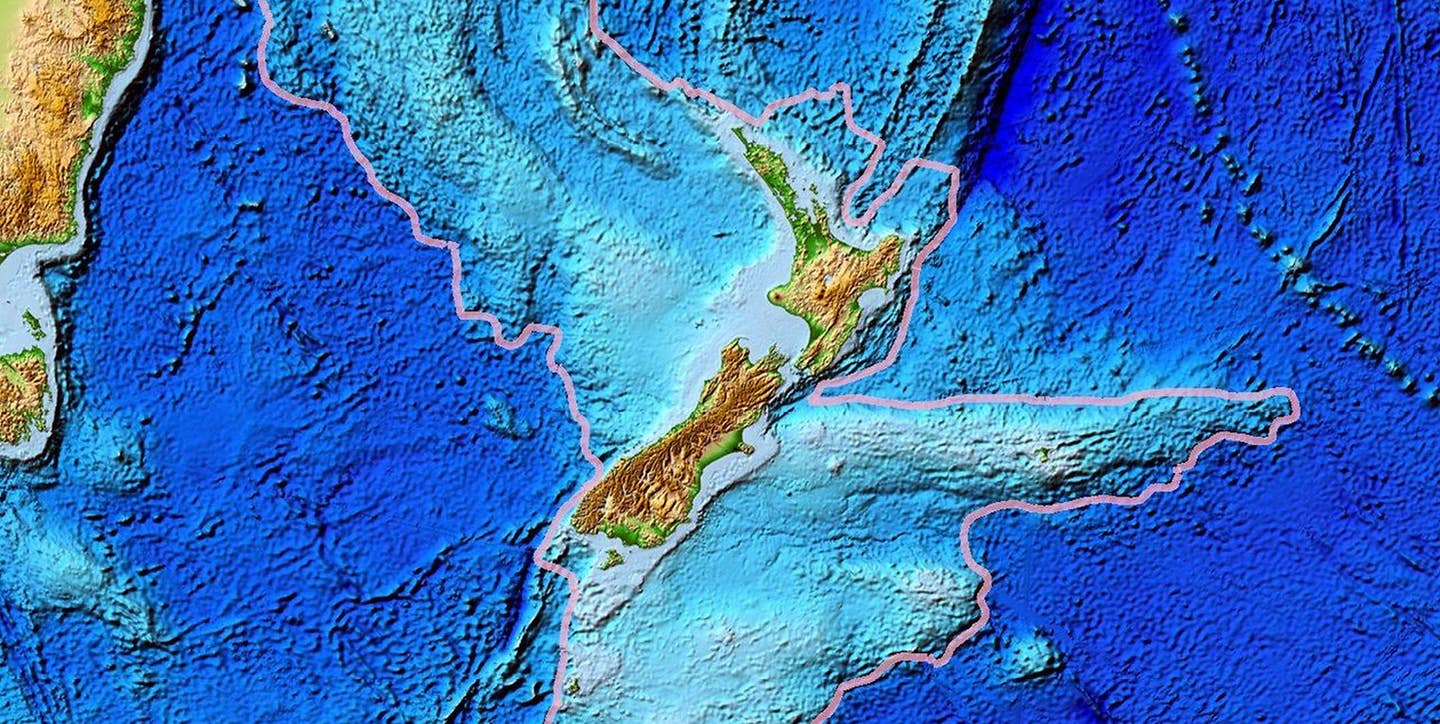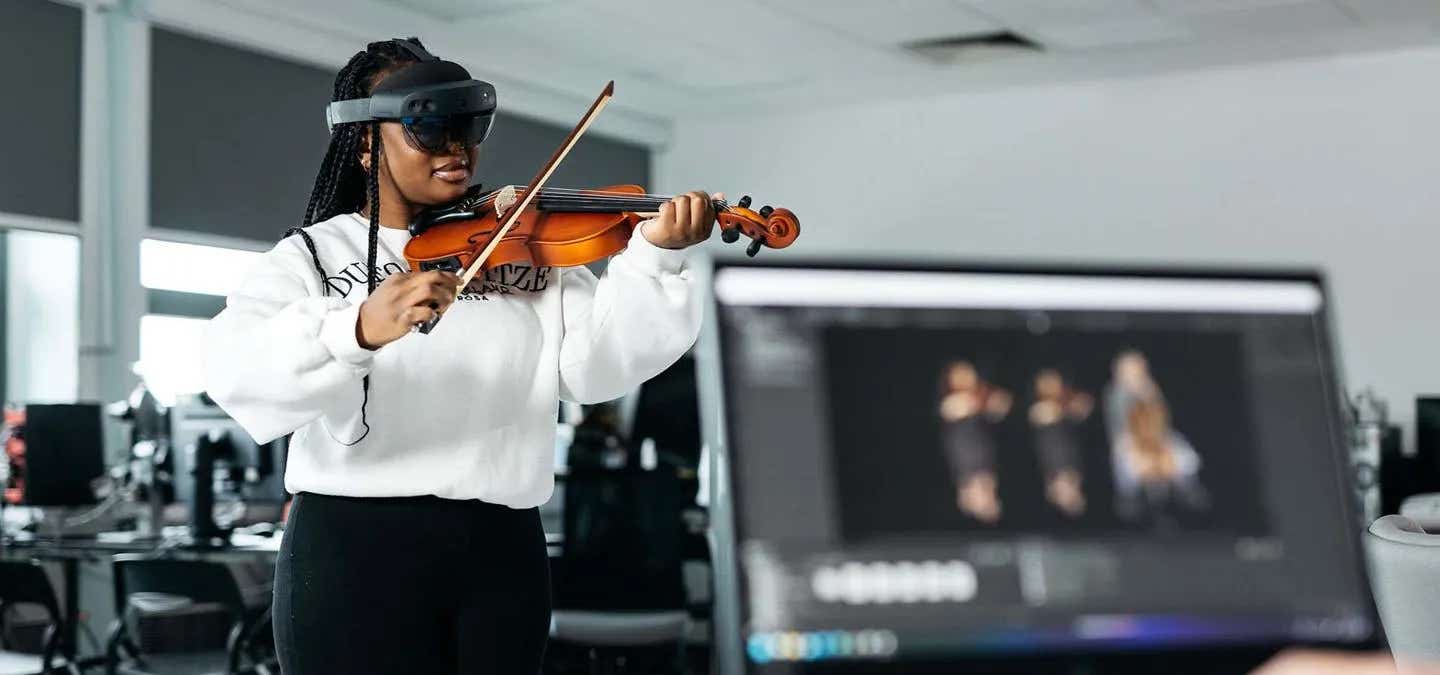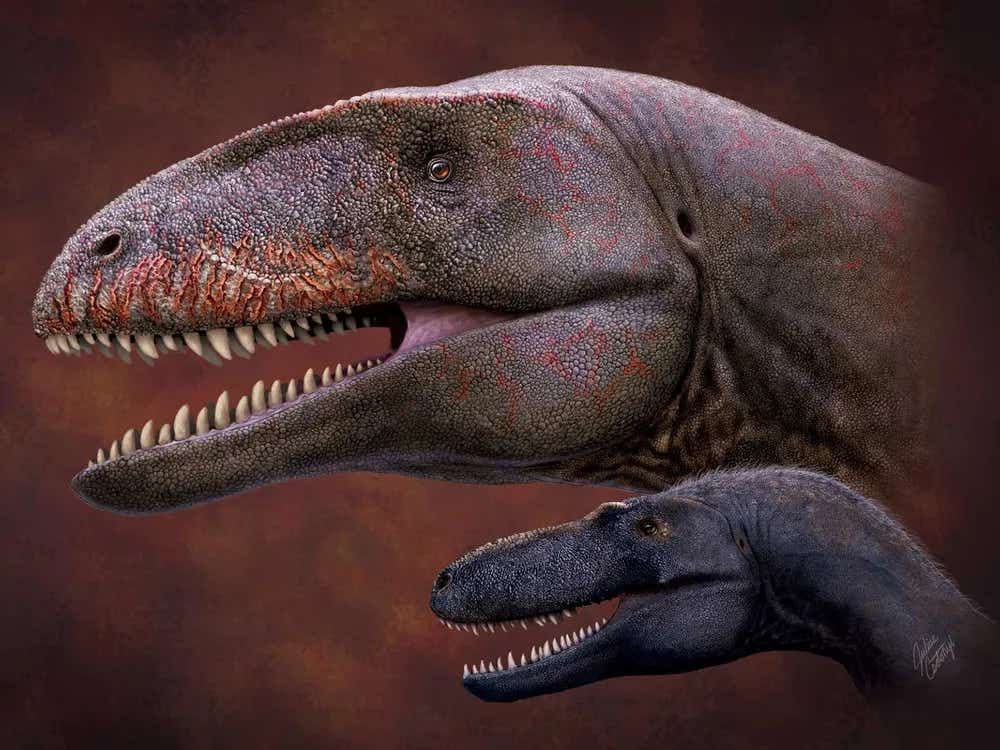New discovery upends our understanding of the Solar System’s formation and history
Subaru Telescope’s discovery of new objects beyond the Kuiper Belt reshapes our understanding of the Solar System and increases the possibility of finding alien life.

The Subaru Telescope (left) and New Horizons spacecraft (right). (CREDIT: NAOJ/Southwest Research Institute)
Recent observations of the outer Solar System using the Subaru Telescope have uncovered objects where none were expected, hinting at the possibility of a larger and more complex structure in our cosmic neighborhood.
This breakthrough could change how we understand the Solar System's formation and history, and it suggests similarities between our Solar System and other planetary systems, which holds important implications for the search for life beyond Earth.
The Subaru Telescope has been involved in this project in support of NASA’s New Horizons spacecraft. New Horizons, launched in 2006, was the first mission to explore the Kuiper Belt—a vast region beyond Neptune filled with icy bodies. Subaru’s task has been to identify interesting Kuiper Belt Objects (KBOs) for New Horizons to study.
This effort has already led to the discovery of 263 KBOs, with 11 of these objects located beyond the established boundary of the Kuiper Belt.
Related Stories
The significance of these 11 newfound objects lies in their location, as they appear to reside in a distinct "ring" beyond the known Kuiper Belt, separated by a "gap" where few objects are found. Such a ring-and-gap structure has been observed in young planetary systems, notably with the ALMA radio telescope in Chile, but this is the first time such a feature has been suggested in our own Solar System.
Dr. Fumi Yoshida from the University of Occupational and Environmental Health Sciences and the Planetary Exploration Research Center at Chiba Institute of Technology explained, “If this is confirmed, it would be a major discovery. The primordial solar nebula was much larger than previously thought, and this may have implications for studying the planet formation process in our Solar System."
This discovery is a critical piece of evidence in a growing body of research suggesting the presence of objects beyond the known Kuiper Belt. Unlike previous findings, which could be dismissed as outliers or false positives, the high number of objects detected in such a small search area points to the existence of a much larger population of distant bodies.
Dr. Wes Fraser, a co-investigator on the New Horizons science team and the lead author of the study, highlighted the broader implications of the findings. "Our Solar System’s Kuiper Belt long appeared to be very small in comparison with many other planetary systems, but our results suggest that idea might just have arisen due to an observational bias,” he explained. “So maybe, if this result is confirmed, our Kuiper Belt isn’t all that small and unusual after all compared to those around other stars.”
These discoveries extend beyond just the physical structure of the Solar System. In the search for extraterrestrial life, one of the greatest challenges is that we have only one example of a life-bearing planet: Earth. This makes it difficult to discern which factors are necessary for life and which are incidental.
By revealing that the Solar System may not be as unique as once thought, particularly in terms of its formation, the discovery eliminates one more variable that could have been a prerequisite for life.
A larger, less unusual solar nebula increases the chances of finding planetary systems that share the conditions necessary for life. As Dr. Fraser points out, confirming this result could significantly enhance our understanding of which planetary systems may support life, making the search for extraterrestrial life much more focused and hopeful.
Dr. Alan Stern, the Principal Investigator for New Horizons, emphasized the importance of this discovery. “This is a groundbreaking discovery revealing something unexpected, new, and exciting in the distant reaches of the Solar System; this discovery probably would not have been possible without the world-class capabilities of Subaru Telescope.”
While much remains to be studied about the number and distribution of objects at the far edge of the Solar System, one thing is clear: the Subaru Telescope’s results open up new possibilities in what was once thought to be an empty and uneventful part of space.
Other interesting Kuiper Belt Objects (KBOs) discovered by NASA's new New Horizons spacecraft
NASA's New Horizons mission, famous for its groundbreaking flyby of Pluto in 2015, has since turned its attention to the Kuiper Belt, a region filled with icy bodies and remnants from the solar system’s early days. Here are some of the most interesting Kuiper Belt Objects (KBOs) New Horizons has discovered or studied:
1. Arrokoth (2014 MU69)
- Closest Flyby: After Pluto, New Horizons performed a historic close encounter with Arrokoth on January 1, 2019. This object, shaped like two flattened spheres stuck together, is the most distant world ever explored. It provided insight into how planetesimals, the building blocks of planets, form. The dual-lobe shape suggests a slow, gentle merger of two smaller objects, offering clues about the early solar system.
- Significance: Arrokoth's unaltered state and pristine surface provide a window into the conditions of the early solar system, long before planets like Earth fully formed.
2. 2014 OS393 and 2014 PN70
- Potential Targets: These are two other Kuiper Belt Objects that New Horizons considered as potential targets before choosing Arrokoth. Although the spacecraft didn’t fly by these objects, they were studied using ground-based telescopes, providing additional data about their orbits and physical characteristics.
- Significance: These observations contribute to a broader understanding of the diversity of KBOs in this distant region.
3. Pluto’s Moons (Nix, Hydra, Charon, Styx, Kerberos)
- Although Pluto itself is technically a dwarf planet, its status as a Kuiper Belt Object makes its moons important members of this category. New Horizons captured detailed images of Pluto's large moon Charon and smaller moons Nix and Hydra. Nix, for example, showed surprisingly bright regions, suggesting some internal activity or past collisions.
4. KBO Ring Surveys
- In its extended mission, New Horizons continues to observe KBOs from afar using its Long Range Reconnaissance Imager (LORRI). These objects provide valuable data about the size distribution, color, and surface properties of KBOs. One of the key findings is that these objects are often covered in methane, ammonia, and other ices.
5. Unseen KBOs
- In addition to objects it directly targets, New Horizons has revealed previously unseen KBOs using its telescopic instruments. This contributes to cataloging KBO populations and understanding their distribution. Many of these KBOs remain unstudied in detail but will be important for future exploration.
Instead of a desolate void, the region beyond the Kuiper Belt may be teeming with undiscovered objects, waiting to reveal more secrets about the formation and structure of our Solar System.
Note: Materials provided above by The Brighter Side of News. Content may be edited for style and length.
Like these kind of feel good stories? Get The Brighter Side of News' newsletter.
Joshua Shavit
Science & Technology Writer | AI and Robotics Reporter
Joshua Shavit is a Los Angeles-based science and technology writer with a passion for exploring the breakthroughs shaping the future. As a contributor to The Brighter Side of News, he focuses on positive and transformative advancements in AI, technology, physics, engineering, robotics and space science. Joshua is currently working towards a Bachelor of Science in Business Administration at the University of California, Berkeley. He combines his academic background with a talent for storytelling, making complex scientific discoveries engaging and accessible. His work highlights the innovators behind the ideas, bringing readers closer to the people driving progress.



